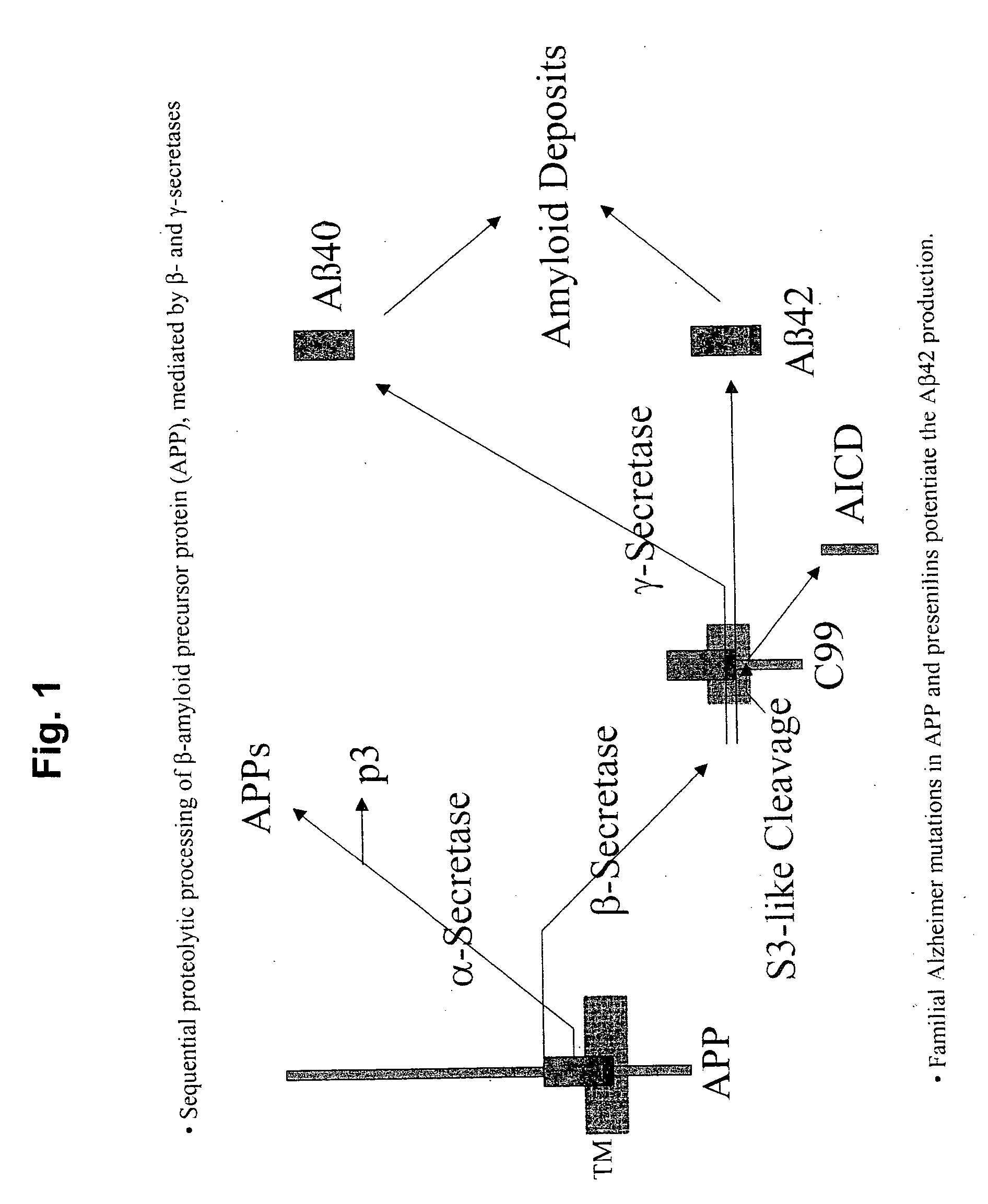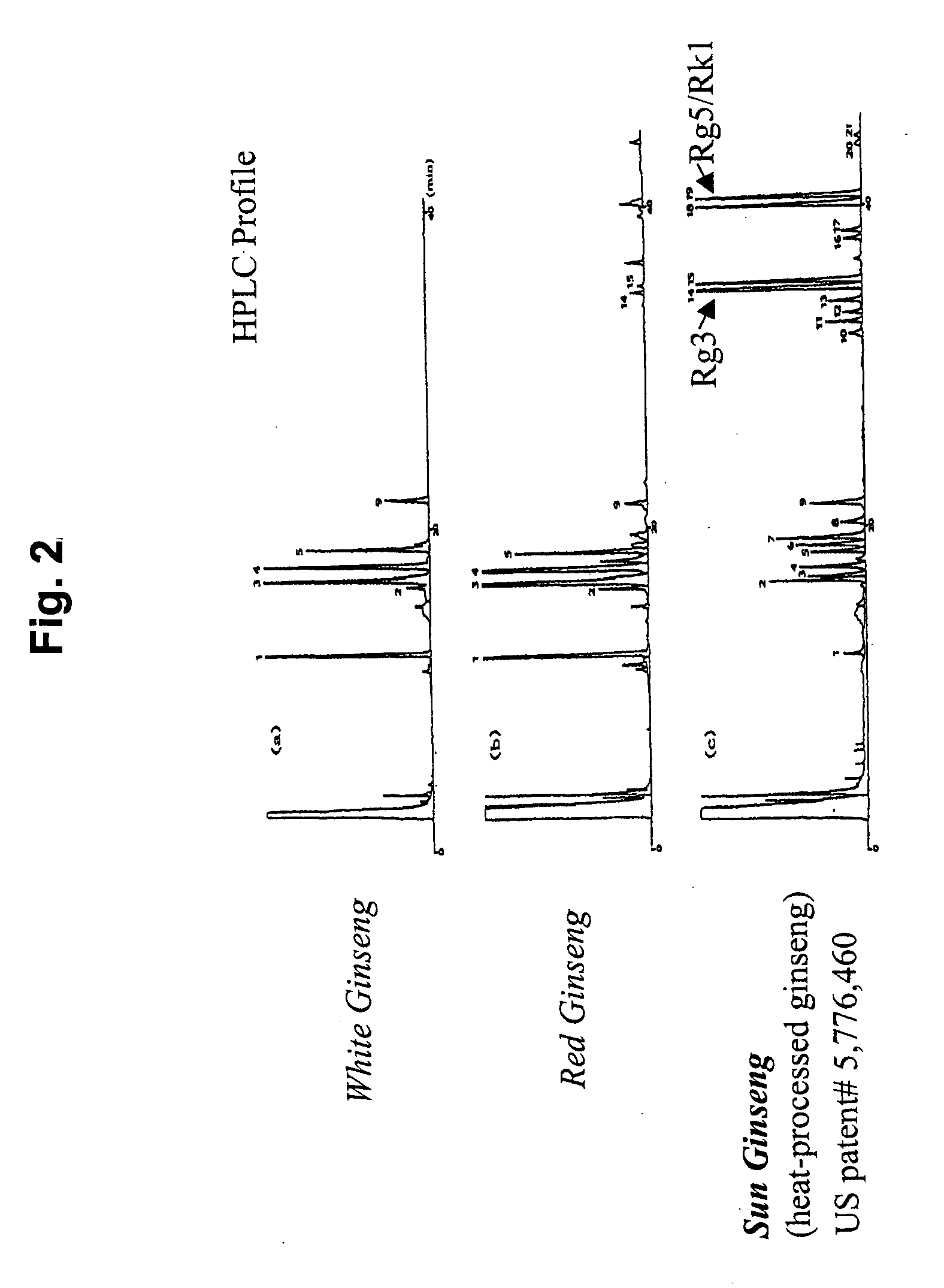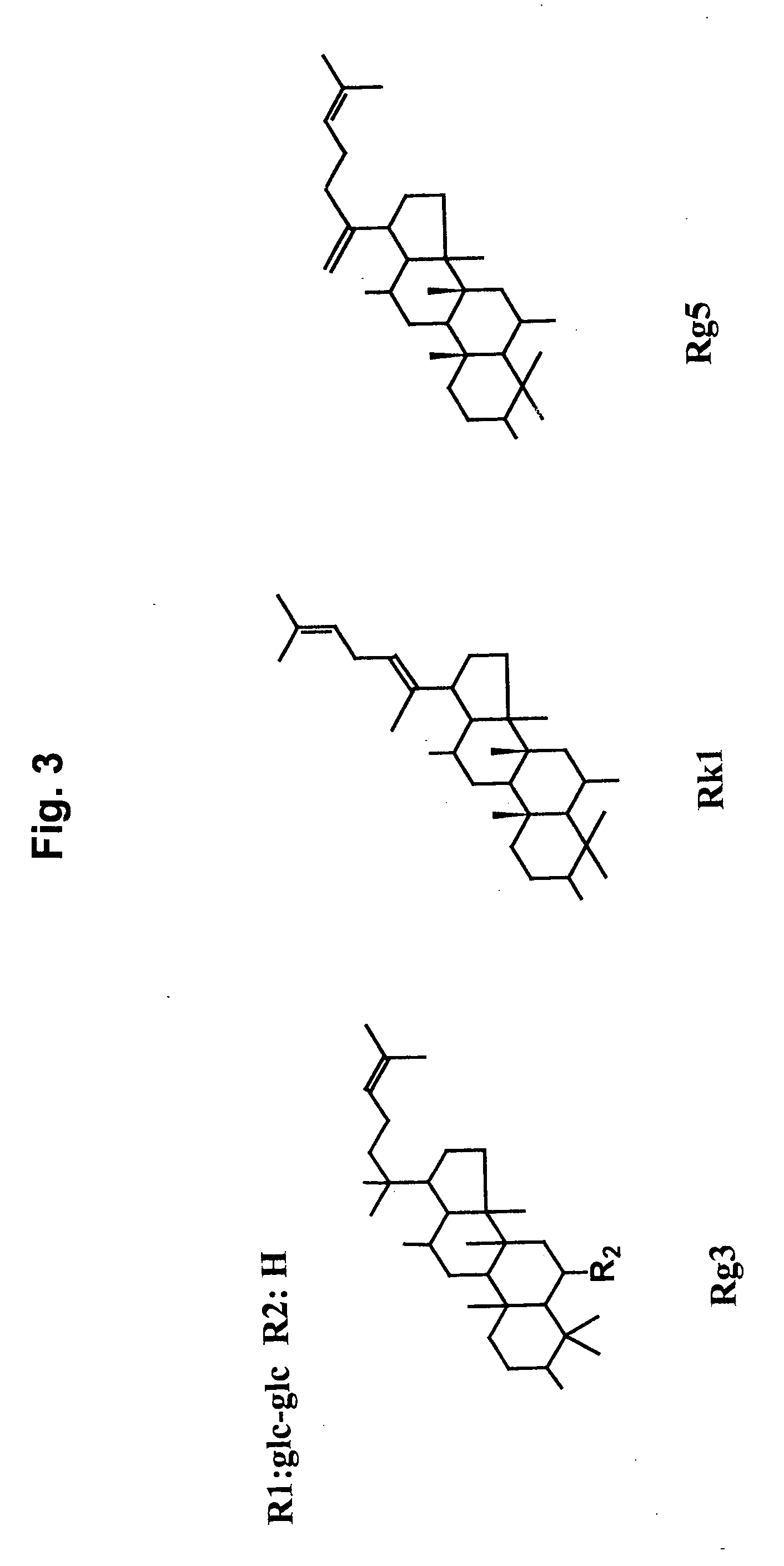Compounds for treating Alzheimer's disease and for inhibiting beta-amyloid peptitde production
a technology of beta-amyloid peptite and compound, which is applied in the field of neurodegenerative diseases, can solve the problems of inability to maintain normal social and/or occupational performance, inability to cure alzheimer's disease, and inevitable cognitive decline, so as to reduce inhibit the production of a42, and reduce the level of a42
- Summary
- Abstract
- Description
- Claims
- Application Information
AI Technical Summary
Benefits of technology
Problems solved by technology
Method used
Image
Examples
example 1
[0079] The potential effects of ginsenosides and their analogues in treating AD were examined. First, a number of ginsenosides were screened based on their effects on Aβ generation. The effects of various ginsenosides on Aβ (e.g., Aβ40 and Aβ42) production was initially accessed by incubating the Chinese hamster ovary (CHO) cells expressing human APP(CHO-APP cells) with each ginsenoside purified from unprocessed ginseng (known as “white ginseng”). These representative ginsenosides included Rb1, Rb2, Rc, Rd, Re, Re, Rg1 and Rg2 and differ in their side chains and sugar moieties.
[0080] Tables 1-3 Structure of ginsenosides utilized in the study and their effects on Aβ42 generation. They differ at the two or three side chains attached to the common triterpene backbone known as dammarane. The common structure skeleton for each group of ginsenosides is shown in the top panel. Ginsenosides that harbor Aβ42-lowering activity are indicated in the far right column of the tables: Aβ42-lowerin...
example 2
[0090] The benefits of ginsenoside therapy for treating AD associated neurodegeneration can be demonstrated in a murine model of AD. Specifically, the ginsenoside compounds (20S)Rg3, Rk1, Rg5 and Rgk351 can be used to treat mice suffering from AD associated neurodegeneration.
[0091] Mice expressing human APP as well as mice expressing the Swedish familial Alzheimer's disease mutant form of APP can be obtained from the Jackson Laboratory, 600 Main Street, Bar Harbor, Me. 04609. Four groups of mice can then be studied: (1) APP mice without ginsenoside treatment (placebo); (2) Swedish mice without ginsenoside treatment (placebo); (3) APP mice+Rg5 (100 μg / μl / day); and (4) Swedish mice+Rg5 (100 μg / μl / day). After approximately 16 weeks of injection therapy, amounts of Aβ42 in the serum of the mice can be measured. It is expected that the results of this study will demonstrate the general benefits of ginsenoside therapy for treating AD associated neuordegeneration. APP and Swedish mice wit...
PUM
| Property | Measurement | Unit |
|---|---|---|
| Composition | aaaaa | aaaaa |
Abstract
Description
Claims
Application Information
 Login to View More
Login to View More - Generate Ideas
- Intellectual Property
- Life Sciences
- Materials
- Tech Scout
- Unparalleled Data Quality
- Higher Quality Content
- 60% Fewer Hallucinations
Browse by: Latest US Patents, China's latest patents, Technical Efficacy Thesaurus, Application Domain, Technology Topic, Popular Technical Reports.
© 2025 PatSnap. All rights reserved.Legal|Privacy policy|Modern Slavery Act Transparency Statement|Sitemap|About US| Contact US: help@patsnap.com



